Plant
Balsa
Characteristics
Tropical wood that is lightweight, soft, and porous. One of the lightest commercial woods, with a low density and is easy to cut, handle, and shape. Has thin-walled, large cells filled with air, contributing to insulating properties and buoyancy. The grain is typically straight and has a pale, creamy color that darkens slightly with age.
Typical applications
Products: Boat hulls, rafts, surfboards, toys, table tennis paddles.
Industry: Thermal and acoustic insulation. Core material in composite construction for wind turbine blades, boats, and lightweight panels.
Model making: Architecture, airplanes, ships, art and hobby crafting.
Recycling & Regeneration
Balsa wood is a renewable resource from fast-growing trees, native to Central and South America. They reach maturity in only 5–7 years, making them highly sustainable when managed responsibly, making them highly sustainable when managed responsibly. Balsa wood is difficult to recycle when used in composite materials. However, discarded pieces can be repurposed for new uses.
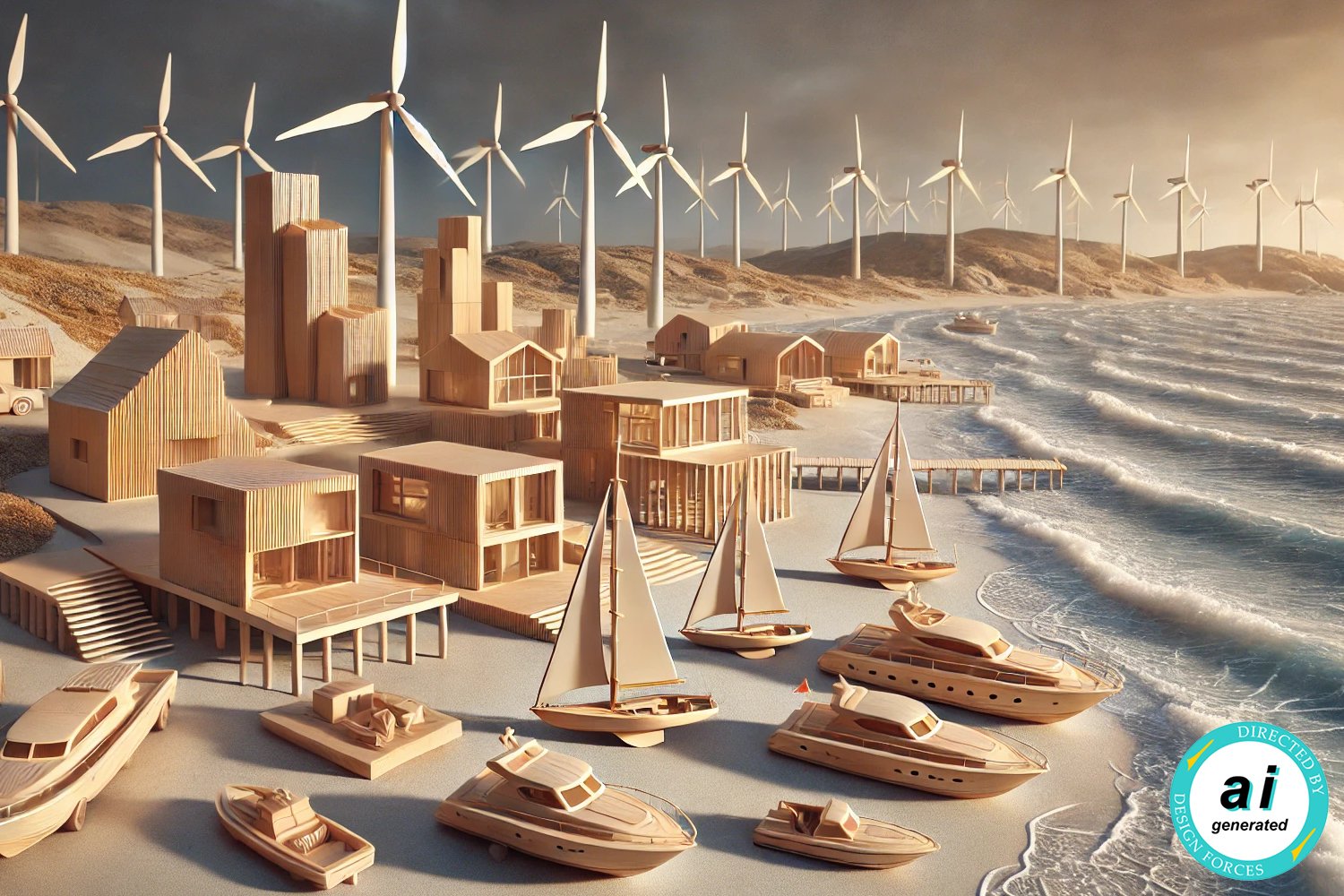

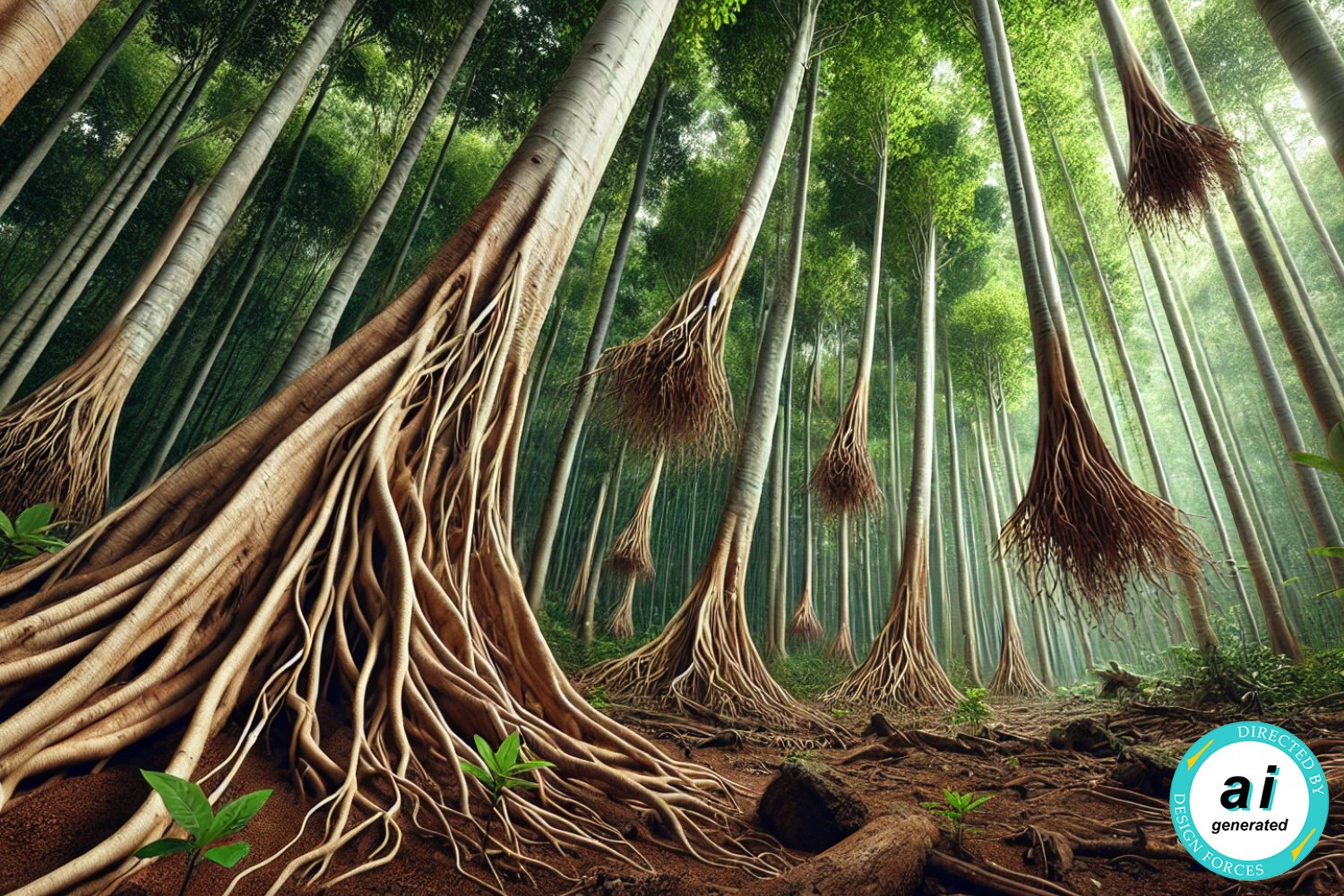
Bamboo
Characteristics
Fast-growing grass plant with strength, lightness, and flexibility. The hollow stems have nodes/joints that are also visible in bamboo wood across the natural grain. The pulp can be used to make fabrics with a typically silky texture. Colors range from pale yellow to golden brown. Carbonization/heating gives darker, coffee-brown shades.
Typical applications
Products: Cutting boards, utensils, bowls, toothbrushes, disposable cutlery, decorative items, frames, lighting.
Furniture: Seating, tables, beds, shelves, cabinets, outdoor.
Fabrics: Clothing, bedding, towels, home textiles.
Construction: Rafters, beams, joists, flooring, scaffolding.
Recycling & Regeneration
Biodegradable and compostable. Recycling can be either mechanical or chemical, yet more difficult in combination with other materials. Can also be repurposed, or even upcycled into higher value products before incineration for energy. Certain species can grow (regenerate) nearly 1 meter (39 in) every 24 hours under ideal conditions.



Beech
Characteristics
Relatively heavy, durable and resilient, resisting both compression and bending forces well. The color is pale cream, at times with warmer hues and subtle stripes.
The straight grain and smooth texture are ideal for various finishes and stains. Almost no differences between heartwood and sapwood. Better for indoor use.
Typical applications
Furniture: Tables, (bentwood) chairs, sofas, cabinets.
Products: Tool handles, kitchen utensils, spoons, bowls, cutting boards, musical instruments, baseball bats, toys.
Interior: Flooring, wall paneling, staircases, sculptures.
Industry: Pallets, crates, wood pulp, paper.
Recycling & Regeneration
A renewable resource, primarily sourced from sustainably managed forests in Europe and North America. The recycling potential of beech wood is high; it can be repurposed into new furniture, particleboard, or even energy production in the form of biomass pellets.



Birch
Characteristics
Relatively hard and heavy wood with a fine, close grain, even texture and smooth finish. Suitable for staining and painting. The colors are typically light and ranging from creamy white to pale yellow, often with darker heartwood in the center of the trunk. Some of the sorts have a distinctive curly grain instead of the typical straight one.
Typical applications
Products: Turned or carved décor, toys, utensils, musical instruments.
Furniture: Cabinets, tables, countertops, chairs. As solid, veneer, or sturdy plywood. Mainly mass-produced.
Construction: As plywood also for interior design, planks and boards for flooring. Untreated logs with bark are used decoratively.
Recycling & Regeneration
Highly recyclable. Can often be repurposed into other products, composite materials, and biomass for energy production. Biodegradable and relatively fast-growing with an ability to regenerate quickly and thrive in a variety of climates. Responsible forestry practices with continuous growth make birch a sustainable source of timber.
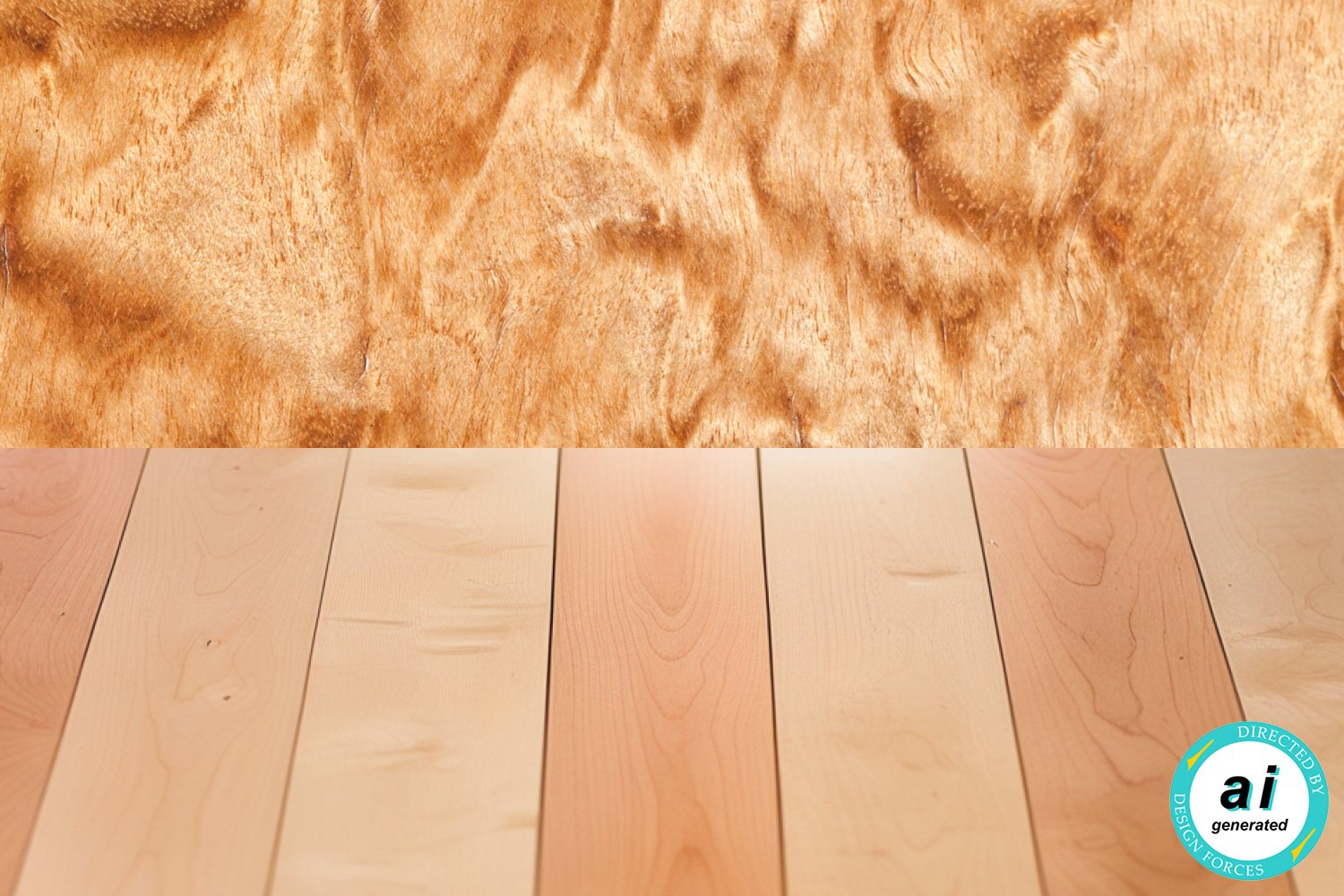
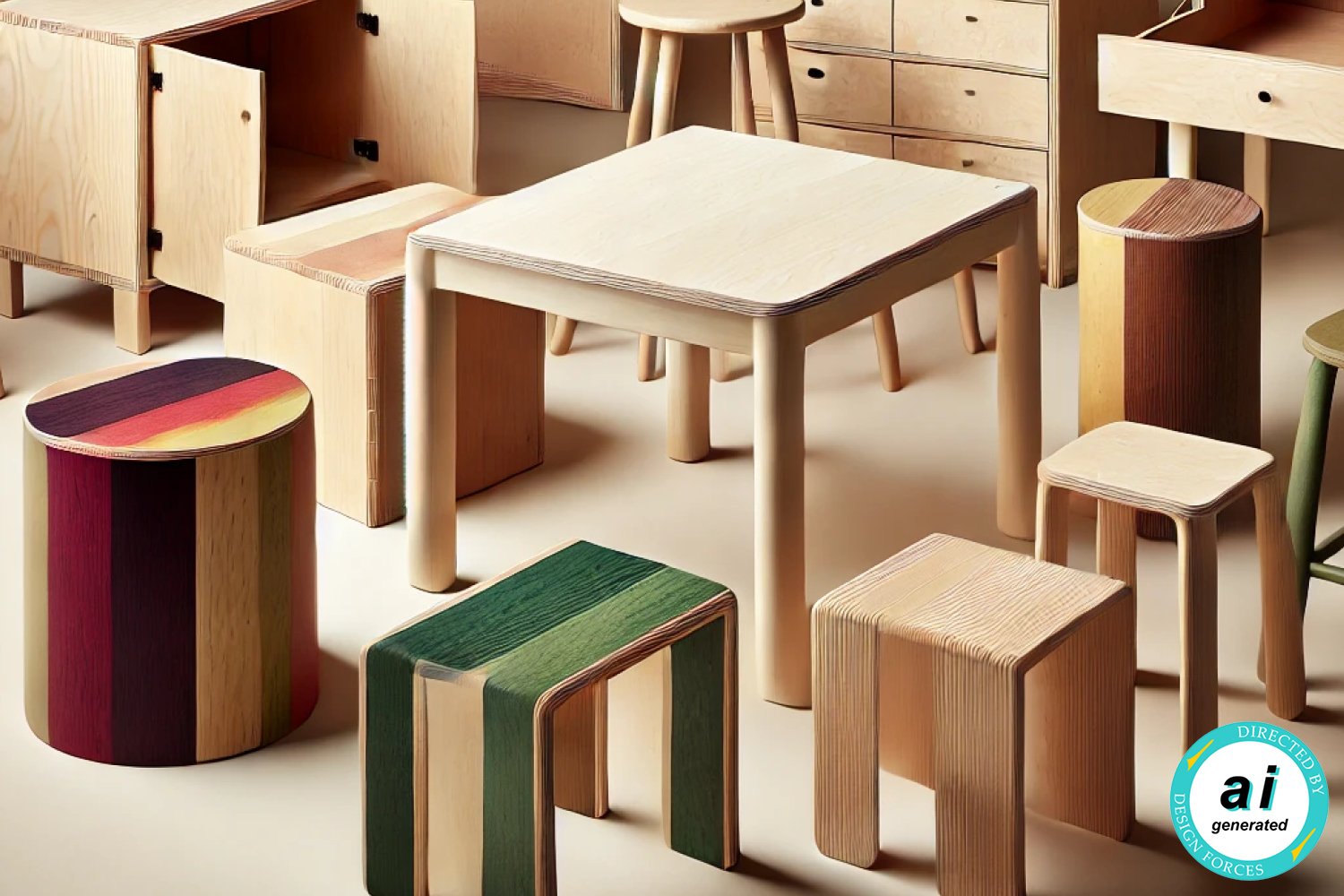
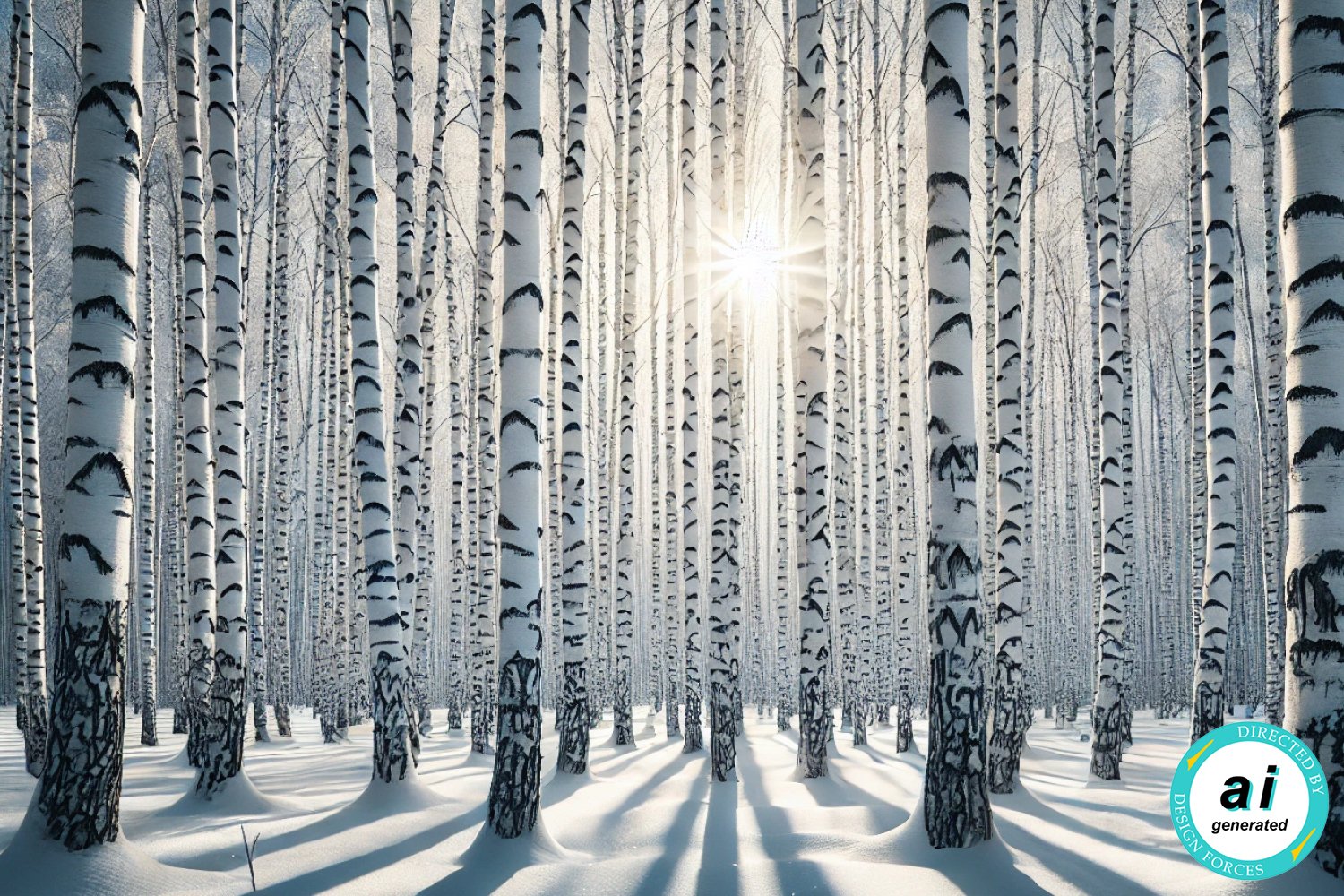
Corrugated Cardboard
Characteristics
Highly durable, strong, lightweight, and cost-effective. Typically consisting of three or more layers: two flat outer liners and one to three wavy, fluted middle layers: the corrugated medium. If not single faced with one liner. Flutes can vary in size: larger flutes for better cushioning and smaller flutes for more rigidity and printability.
Typical applications
Packaging: Heavy-duty, printed/coated retail product packs.
Logistics: Shipping boxes, protective fillers and inserts, pallet skirts.
Storage: Moving and archive boxes, magazine holders, organizers.
Food: Boxes for take-out or produce, beverage insulators.
Misc.: Displays, lightweight furniture, DIY, lo-fi prototyping.
Recycling & Regeneration
Biodegradable and decomposes naturally. One of the most widely recycled materials globally. Recycling involves collecting used corrugated cardboard, breaking it down into fibers in a water-based solution. These fibers are cleaned, refined, and used to produce new paper-based products. Identifiable by the recycling code 20.





Cotton
Characteristics
Natural fibers derived from the cotton plant, which are spun into threads. Woven fabric is lightweight, durable, breathable, has excellent moisture absorption, and is comfortable against the skin. Can absorb a lot of water and dyes well, allowing for a deep and wide range of colors.
Appearance is smooth and matte, or with a slight shine.
Typical applications
Apparel: Shirts, t-shirts, dresses, shorts, jeans, workwear, socks, sweatshirts, aprons, underwear, pajamas, bathrobes.
Home: Bedding, towels, upholstery, pillowcases, duvet covers.
Hygiene: Cotton rounds, swabs, tampons, gauze, cloths.
Other: Hats, backpacks, canvas for print or art, canvas bags.
Recycling & Regeneration
Cotton is biodegradable and renewable, yet the production is more resource-intensive than synthetic materials. Recycling involves repurposing waste from production and consumption. Recycling cotton fibers that have been blended with other fibers for performance remains complex but is still evolving with advances in technology.
Identifiable by the recycling code 60.



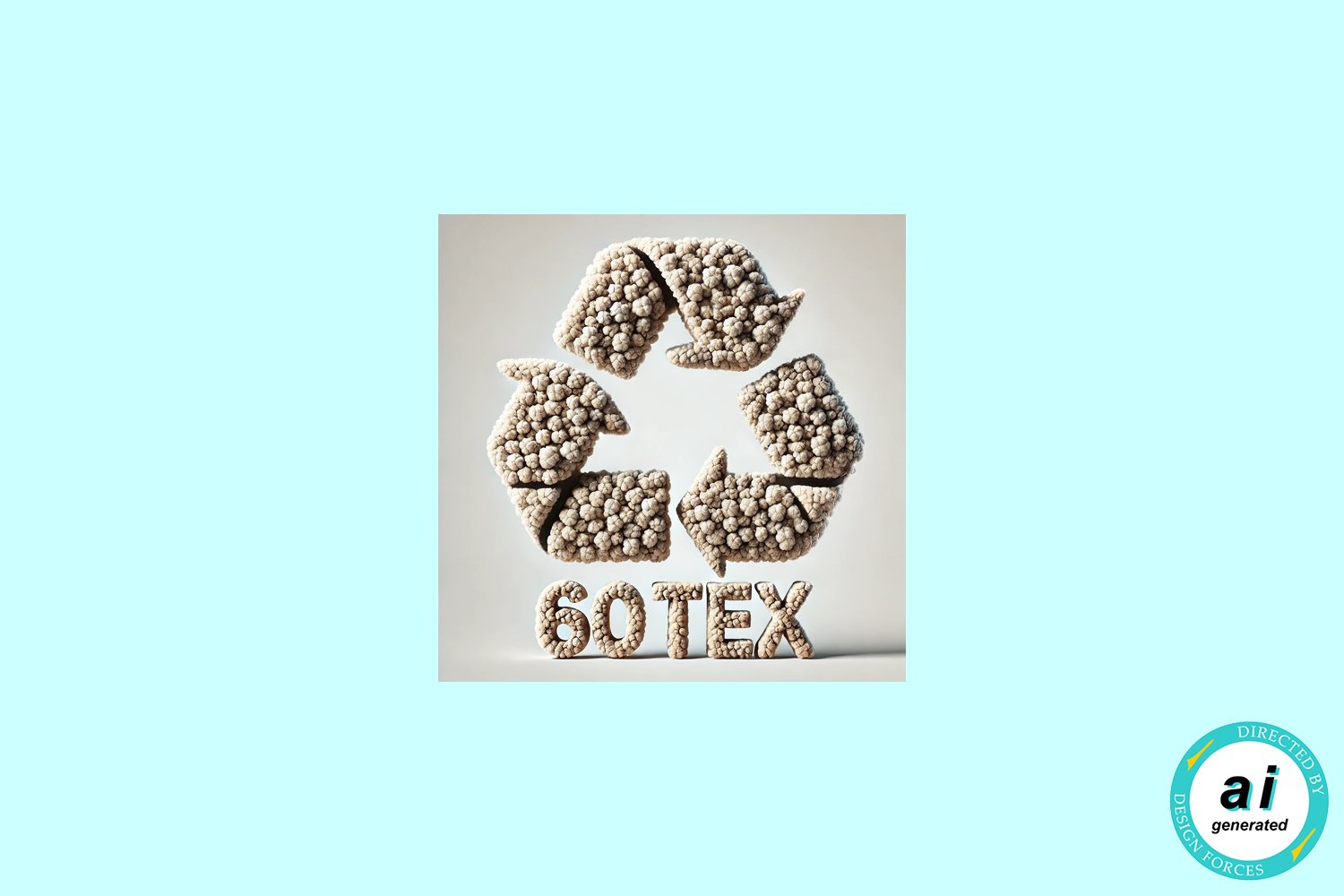
Spruce & Fir
Characteristics
Spruce and fir are strong yet lightweight, straight-grained woods with a creamy white to yellowish color and a fine, even texture. They have good acoustic properties and resonance. Despite being softwoods, they are durable to resist splitting and warping.
Typical applications
Décor: Both spruce and fir are popular choices for Christmas trees.
Products: Both are essential in paper production. Affordable furniture. Spruce used in musical instruments like violins and guitars.
Construction: Housing for beams, joists, and studs. Spruce used in aircraft frames.
Recycling & Regeneration
Both spruce and fir woods are often recycled into particleboard, mulch, or biofuel and refurbished for new uses, reducing the need for new timber. Spruce and fir trees grow relatively quickly and are resilient, making them ideal for reforestation efforts. Helping with CO2 absorption and support sustainable forestry practices.










